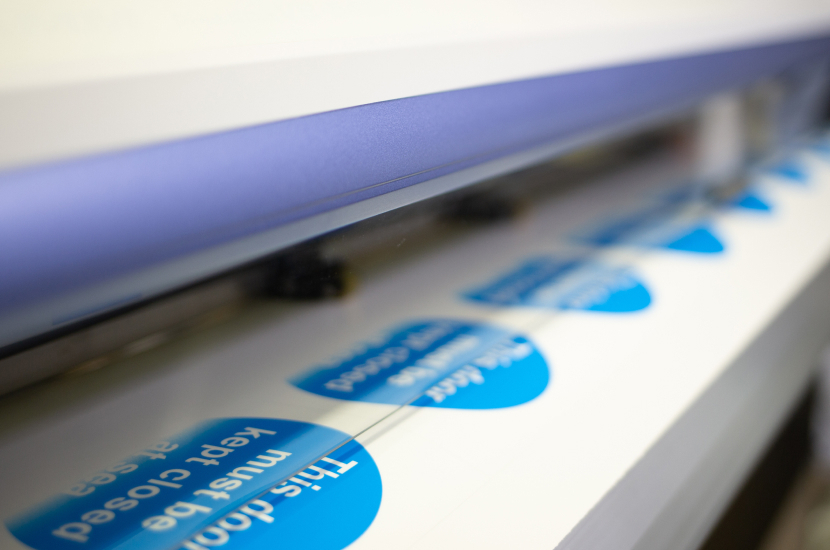Wide Format vs. Digital Label Press: Which Machine Expands Your Print Services?

For years, the wide-format printer has been the backbone of many print shops, churning out banners, signage, and custom graphics with ease. But when it comes to meeting the growing demand for short-run, high-margin labels, sticking with this old-school approach can hold your business back.
Traditional wide-format printers weren’t designed for roll-to-roll label production, and relying on them for this work can mean slower turnaround, higher costs, and missed opportunities.
That’s where a digital label press comes in. In this post, we’ll explore why wide-format printing is starting to feel outdated for labels, compare it with modern digital label technology, and show how the SnapPress LP-1 Digital Label Press can help your shop expand services, increase profits, and stay ahead in a competitive market.
What Is a Wide-Format Printer?
Wide-format printers were first introduced in the 1980s to handle large-scale print jobs such as banners, signage, and posters. These machines are optimized for printing larger designs with high-quality output, but that same precision can make producing smaller items, like labels, more challenging.
Printing short runs of labels on a wide-format printer is possible, but it often requires extra setup, careful handling of materials, and additional finishing steps.
The combination of longer run times and higher labor requirements can make small-scale label production less efficient and more costly compared to using a purpose-built digital label press.
What Is a Digital Label Press?
A digital label press is a machine specifically designed to produce labels efficiently and consistently. Unlike wide-format printers, digital label presses are optimized for roll-to-roll printing, delivering precise, high-quality output for short or mid-run label jobs.
These presses are also easier to use than wide-format machines, allowing operators to create custom labels quickly with minimal training and no specialized background. This makes digital label presses an ideal choice for smaller-scale operations or shops with less-experienced staff looking to expand into high-margin label production.
SnapPress LP-1 vs. Wide Format Printers
Wide-format printers often fall short when it comes to producing high-quality labels. They weren’t designed for the precision, speed, or efficiency required for smaller-scale label production, which is where a digital label press like the SnapPress LP-1 truly excels.
The difference becomes clear when you compare outputs. While a wide-format printer might produce just 16 labels in five minutes, the LP-1 can produce 450 labels in the same amount of time, dramatically increasing both throughput and profitability.
Don’t just take our word for it. Alex Molfetas of Center City Print shares his experience using both wide format and the LP-1, highlighting why the LP-1 is the clear winner for creating consistent, professional-quality labels quickly and efficiently.
Expand Your Print Services with the Right Technology
The label market is growing fast, projected to rise from USD 47 billion in 2025 to USD 61.5 billion by 2030. For print shops, this represents a significant high-margin opportunity, but wide-format printers aren’t built to take full advantage of it. They’re great for large graphics, but producing short-run, high-quality labels can be slow and labor-intensive.
Designed specifically for label production, the SnapPress LP-1 delivers precise, consistent results quickly, letting your shop produce more labels in less time and capture revenue that wide format printers can’t.
And the best part? You can request a free label sample today to experience the LP-1’s quality firsthand.






